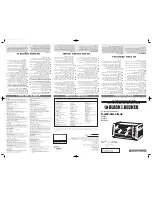
37
Part 5 - Venting
Failure to install the boiler within the minimum and maximum vent length
requirements could result in improper product operation and property
damage, serious personal injury, or death.
When venting with PVC, first install the included 5” length of 3” CPVC into
the boiler’s exhaust connection, then adapt to PVC using approved CPVC
to PVC transition cement. Installing PVC pipe into the boiler’s exhaust
connection is strictly prohibited - the strain of the gear clamp combined
with heat can deform PVC over time and result in flue gas leakage
causing property damage, severe personal injury, or death.
WARNING
WARNING
Friction Loss Equivalent in Piping and Fittings
Fittings or Piping
Equivalent Feet
2” or 3”
90 Degree Elbow*
5’
45 Degree Elbow
3’
Coupling
0’
One Foot of Straight Pipe
1’
Concentric Kit
3’
Table 13 - Minimum - Maximum Vent Runs
Vent Sizing Example
If the exhaust vent run has two 90
o
elbows, 10 feet of straight pipe
and a concentric kit we will calculate:
Exhaust Vent Equivalent Length
= (2x5) + 10 + 3 =
23 feet
- Well
below the maximum of 100 ft in 2” pipe, or 150 ft in 3” pipe.
If the intake air pipe run has one 90
o
elbow, two 45
o
elbows, and 14
feet of straight pipe:
Intake Air Pipe Equivalent Length
= 5 + (2x3) + 14 =
25 feet
- Well
below the maximum of 100 ft in 2” pipe, or 150 ft in 3” pipe.
NOTE:
The intake air pipe and exhaust vent do not have to be of equal
length. There is no balancing requirement between intake and exhaust.
F. Tightening Boiler Collar to Exhaust Vent and Intake Pipe
All models ship with 3” diameter vent pipe exhaust vent and intake air
pipe connections.
a. All 085 / 110 / 150 Models - Vent diameter may be DECREASED
to 2”.
b. 199 / 199C Models must be vented in 3” diameter pipe.
c. Increasing the vent diameter of ANY model boiler IS NOT an
option.
E. Exhaust Vent and Intake Pipe Sizing
1. All models ship with 3” diameter vent pipe exhaust vent and intake
air pipe connections.
a. All 085 / 110 / 150 Models - Vent diameter may be DECREASED
to 2”.
b. 199 / 199C Models must be vented in 3” diameter pipe.
c. Increasing the vent diameter of ANY model boiler IS NOT an
option.
2. The total length of the intake air pipe run must not exceed
one
hundred (100) feet in 2” pipe
, or
one hundred fifty (150) feet in 3”
pipe.
NOTE:
There is no minimum length for the intake air pipe run.
3.
The total length of the exhaust vent pipe run must not be less
than six (6) feet.
4.
The total length of the exhaust vent pipe run must not exceed
one hundred (100) feet in 2” pipe
, or
one hundred fifty (150) feet
in 3” pipe.
Minimum - Maximum Vent Run Lengths
Diameter
2”
3”
Intake Air Pipe Run
0 - 100 feet
0 - 150 feet
Exhaust Vent Run
6 - 100 feet
6 - 150 feet
5. The equivalent length of elbows, tees, and other fittings are listed in
the Friction Loss Table below.
Table 14 - *Friction loss for long radius elbow is 1 foot less. NOTE: Consult
Polypropylene venting instructions for friction loss and pressure drop
equivalents.
Follow the steps to install exhaust vent pipe into the boiler vent
collar. See
Figure
23 for additional details.
NOTE:
Clean and dry the boiler connection.
DO NOT use primer or cement on the boiler connection.
When preparing pipe for installation:
•
Ensure cuts are square.
•
Bevel cut edges by 1/16” - 1/8”. Deburr the pipe.
•
Lubricate the gasket.
1. Push the length of pipe into the connection until it touches the
bottom of the fitting.
2. Tighten the clamps using a screwdriver.
3. Ensure the pipe is secure before continuing installation.
NOTE:
To install intake pipe, follow the steps for installing exhaust vent
pipe.
Figure 23 - Correct Installation into the Appliance Collar
G. Exhaust Vent and Intake Pipe Installation
All joints of positive pressure vent systems must be sealed completely
to prevent leakage of flue products into the living space. Failure to do so
could result in property damage, serious injury, or death.
WARNING
Figure 24 - Correct Installation into the Appliance Collar
Reducing Vent Diameter - 085 / 110 / 150 Models ONLY!
In order to use 2” pipe, it is required to reduce pipe size in a vertical
length of pipe with a 3” x 2” reducing coupling (not included).
NOTE:
A reducing coupling MUST BE USED when transitioning from
3” to 2” vent pipe. DO NOT use reducing bushings.
1. Use only solid PVC, CPVC, or stainless steel pipe or a Polypropylene
vent system approved for use with Category IV appliances.
ABS pipe material may be used on air inlet piping
only
.
2. Remove all burrs and debris from joints and fittings.
3. When using PVC or CPVC pipe, all joints must be properly cleaned,
primed, and cemented. Use only cement and primer approved for
use with the pipe material. Cement must conform to ASTM D2564
for PVC and ASTM F493 for CPVC pipe.
NOTE: DO NOT CEMENT
POLYPROPYLENE PIPE.
Summary of Contents for FTVN
Page 98: ...98 Maintenance Notes...
















































